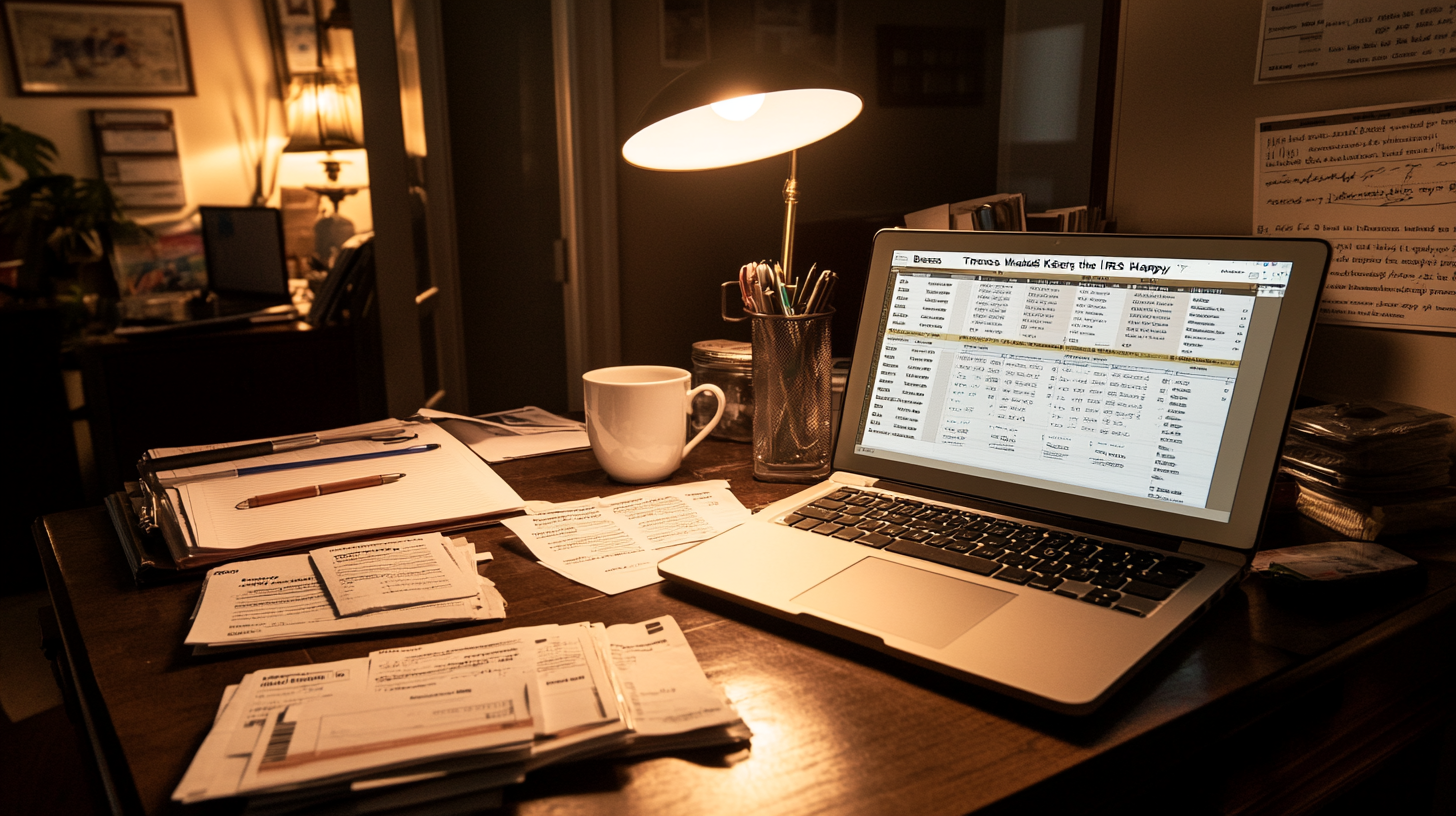Business Travel Expenses Made Easy
In my travels as a frequent flyer, I’ve logged more hours in the sky than I can count. From cross-country client meetings to last-minute overseas negotiations, I’ve come to realize that business travel can be both exhilarating and taxing—financially and otherwise. But there’s good news: with the right approach, you can keep more of your hard-earned money in your pocket by properly deducting expenses, so you can focus on what truly matters: collecting those miles.
Below, I’ve broken down some key guidelines that help ensure you stay on the IRS‘s good side while you hop from gate to gate. Ready for an inside look at how to make your business travel expenses work for you? Let’s dive in.
What Counts as Business Travel?

One of the first things I learned after misinterpreting the rules years ago is that the IRS has a clear definition of what qualifies as business travel. Essentially, you need to be traveling away from your tax home—your main place of work—for longer than a typical workday, and you must need to get rest or sleep en route. That means out-and-back jaunts might not make the cut, but an overnight conference across the country usually will. Just be sure the trip has a legitimate business purpose; a weekend beach retreat disguised as a “client meeting” won’t fly.
Additionally, there’s a key concept known as a temporary assignment. According to IRS guidelines, if you’re assigned to a location for less than a year, you can generally treat it as business travel. Anything more than that and it might be considered a permanent relocation, changing your tax picture entirely. I once worked with a colleague who spent ten months on a consulting gig in a different city. He did a great job maximizing deductions within that window, but once twelve months passed, the tax benefits started to dwindle. Always check how strictly your travel job is tied to official duties to avoid red flags at tax time.
The Must-Know Deductible Essentials

When it comes to deductible essentials, transportation tops the list. Whether you’re booking a commercial flight, taking a train, or even driving your own car at the IRS standard mileage rate—currently around 68 cents per mile in 2025—the idea is to claim only what’s “ordinary and necessary” for your business trip. In my own experience, I’ve seen how quickly these costs add up, especially if your schedule includes multiple stops. Plus, don’t forget about parking and tolls, which can be claimed as well.
After transportation, lodging often takes the biggest bite out of your travel budget. According to 2024 data from the U.S. Travel Association, the average business trip costs around $1,310, with daily expenses hovering near $330. Since the IRS generally expects you to keep your accommodations within reasonable limits, avoid going overboard on five-star suites unless you have a bona fide business justification. Meals, on the other hand, are typically 50% deductible, but I’ve always found it worthwhile to keep detailed receipts in case of an audit. Incidental expenses—baggage fees, laundry, even a small tip for hotel staff—can all factor in. It might seem like nickels and dimes, but trust me, every deduction counts.
Records That Keep the IRS Happy

If you ask me, the real secret sauce to acing your business travel deductions isn’t in the exotic destinations—it’s in the recordkeeping. Documenting each expense, no matter how small, can save you a headache in the long run. I’ve seen colleagues lose out on hundreds of dollars simply because they failed to stash receipts in a safe spot. Beyond receipts, you’ll also want to maintain a log of your itinerary, including flight details, hotel bookings, and the business purpose of each trip. An organized paper (or digital) trail can be the difference between a seamless tax season and a dreaded letter from the IRS.
Additionally, it’s vital to separate the business portion of a trip from any personal pursuits. If you decide to add a few personal vacation days after a conference, only the business-related percentages of your travel can be deducted. A 2023 IRS bulletin specifically highlights that spousal travel isn’t deductible unless your spouse is a bona fide employee whose presence is essential to the business function. This might seem strict, but the boundaries are there so you can clearly show where business ends and leisure begins.
Tools and Tricks for Savvy Flyers

In 2025, we’re spoiled for choice when it comes to tech solutions that make expense tracking almost effortless. I personally love apps like Expensify and Fyle, which let you photograph receipts and store them in the cloud. No more fumbling with crumpled pieces of paper at the bottom of your carry-on! If you’re looking for a more robust setup that also covers bookkeeping, programs like QuickBooks or FreshBooks can seamlessly integrate with your business accounts, generating easy-to-read expense reports come tax season.
Once your documentation is locked in, you’ll want to decide whether to use a per diem rate or actual expenses for meals and lodging. Some find the per diem simpler to track, while others prefer actual costs to capture every dime spent. In my view, it’s all about striking a balance between convenience and accuracy, so check your company’s policies or consult a professional if you’re unsure. For a deeper dive, consider referencing the IRS Publication 463, which is my go-to for clarifying everything from mileage ratings to complex travel scenarios.
Final Thoughts

Business travel can be one of the most rewarding parts of the job—think new networking opportunities, exposure to different cultures, and a chance to step outside your day-to-day routine. However, the nitty-gritty of expense deductions is where it pays to be informed. Juggling flights, hotels, and meal receipts might feel tedious, but the financial payoff makes every ounce of organization worthwhile.
By sticking to the core IRS guidelines, staying diligent about documentation, and choosing the right tools to streamline the process, you’ll be well on your way to maximizing your travel perks. Whether you’re jetting off for a week-long convention or taking a quick overnight trip, remember that the name of the game is accountability—and the payoff is peace of mind during tax season.
Barry B.’s Take
From my vantage point in the frequent flyer world, mastering business travel expenses is about more than saving a few bucks—it’s about turning every trip into a well-oiled operation. I’ve tested just about every approach, from stuffing physical receipts into plastic sleeves to going fully digital with AI-driven expense apps. Each traveler has their own style, but what matters most is consistency.
Ultimately, the sweet spot is where compliance, convenience, and cost savings intersect. If you ask me, the more structured your system, the less stressful your time on the road—and the more you can focus on sampling the local fare, forging new partnerships, or simply earning those beloved loyalty points. The skies are full of possibilities; just make sure your records neatly reflect your journey.
For more entertaining news and insights on the world of travel, visit milesBUZZ.







